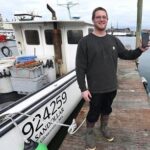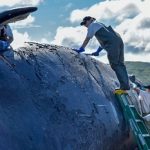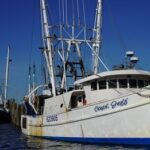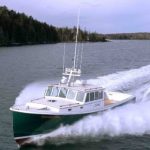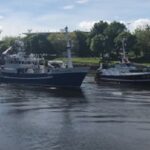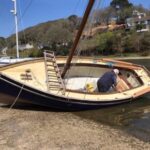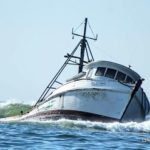Tag Archives: Blue Crab
Louisiana: New restrictions create burden for local crabbers
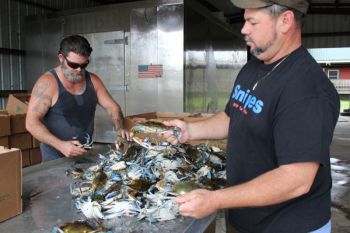 For Whitney Curole of Des Allemands, being a fisherman is an “always” kind of thing — he’s been a crabber since his teenage years, following in the footsteps of his father, and that passion for fishing runs throughout his entire family. But all of that experience nonetheless doesn’t mean it’s not hard sometimes. This year was the first in which the Louisiana Department of Wildlife and Fisheries placed restrictions on blue crab harvest in an effort to restore the blue crab’s population in state waters. “I fought against (the initial one-month ban),” said Curole, who catches crabs and ships them all over the country and who retails crabs himself through his family business in Donaldsonville. click here to read the story 09:05
For Whitney Curole of Des Allemands, being a fisherman is an “always” kind of thing — he’s been a crabber since his teenage years, following in the footsteps of his father, and that passion for fishing runs throughout his entire family. But all of that experience nonetheless doesn’t mean it’s not hard sometimes. This year was the first in which the Louisiana Department of Wildlife and Fisheries placed restrictions on blue crab harvest in an effort to restore the blue crab’s population in state waters. “I fought against (the initial one-month ban),” said Curole, who catches crabs and ships them all over the country and who retails crabs himself through his family business in Donaldsonville. click here to read the story 09:05
Blue Crabs Crest Tipping Point – Maryland and Virginia may limit harvest for the remainder of the season
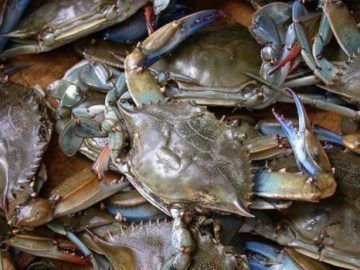 After almost three decades of effort, Maryland’s treasured Chesapeake Bay crustacean, the blue crab, has achieved a major scientific benchmark. The number of spawning females has at last reached the minimum target level for optimum species viability: 215 million sooks. The 2017 Winter Dredge Survey put the female population at well over the minimum, 254 million, an impressive 31 percent increase from the prior year. This is an important moment, as just four years ago (and five years prior to that), the female crab population had been driven to dangerous, even population-collapse, levels.,, To protect overall numbers, the Maryland, Virginia and Potomac River Fisheries Commission has proposed shortening the crabbing season and imposing stricter bushel limits on female crabs. No changes to male crab limits were proposed. click here to read the story 16:25
After almost three decades of effort, Maryland’s treasured Chesapeake Bay crustacean, the blue crab, has achieved a major scientific benchmark. The number of spawning females has at last reached the minimum target level for optimum species viability: 215 million sooks. The 2017 Winter Dredge Survey put the female population at well over the minimum, 254 million, an impressive 31 percent increase from the prior year. This is an important moment, as just four years ago (and five years prior to that), the female crab population had been driven to dangerous, even population-collapse, levels.,, To protect overall numbers, the Maryland, Virginia and Potomac River Fisheries Commission has proposed shortening the crabbing season and imposing stricter bushel limits on female crabs. No changes to male crab limits were proposed. click here to read the story 16:25
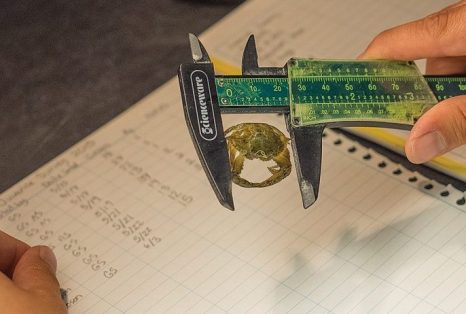
Fishery managers weighing cuts in Bay crab harvest
Chesapeake Bay crabbers will likely face some harvest restriction this season to protect future generations of the iconic crustacean, a move managers say is necessary because of the low population of juveniles. Fishery managers for Maryland, Virginia and the Potomac River Fisheries Commission all say they are considering shortening the season and imposing stricter limits on the harvest of female crabs. They are not proposing changes in male crab catches. News of harvest cuts surprised some crabbers at Maryland’s Blue Crab Industry Advisory Committee last week. The latest winter dredge survey results released in April showed the highest number of female crabs in the 28-year history of the annual count. Female crabs clocked in at 254 million, a 31 percent increase over last year. But the Baywide survey, which counts the crabs in more than 1,000 locations as they burrow in the mud, estimated there were 125 million juvenile crabs in the Chesapeake, a 54 percent decrease from the 271 million found in 2016. That is the lowest tally since 2013 — a year when crabbers also had their catch curtailed — and one of the five lowest estimates since 1990, managers said. Click here to continue reading the article 21:38
Maryland DMR says Chesapeake blue crab population grew by 35 percent over the past year
 Marylanders could have an easier time finding — and affording — local crabs this summer, a survey of the Chesapeake Bay blue crab population suggests. There are more than 550 million blue crabs in the Chesapeake Bay, an increase of more than a third over this time last year and one of the highest counts of the past two decades, according to state officials. They credit favorable weather and past harvest restrictions for a second straight year of strong crab population growth. “We fully anticipate a robust crab season this year,” said Dave Blazer, fisheries survey director for the Maryland Department of Natural Resources. Officials plan to explore whether the increasing numbers should prompt regulators to loosen harvest restrictions or lengthen the crabbing season. click here to read the story 17:18
Marylanders could have an easier time finding — and affording — local crabs this summer, a survey of the Chesapeake Bay blue crab population suggests. There are more than 550 million blue crabs in the Chesapeake Bay, an increase of more than a third over this time last year and one of the highest counts of the past two decades, according to state officials. They credit favorable weather and past harvest restrictions for a second straight year of strong crab population growth. “We fully anticipate a robust crab season this year,” said Dave Blazer, fisheries survey director for the Maryland Department of Natural Resources. Officials plan to explore whether the increasing numbers should prompt regulators to loosen harvest restrictions or lengthen the crabbing season. click here to read the story 17:18
Crab ban timing aggravates fishermen – “It’s not too late. Give us an emergency opening.”
 Crab fishermen are expressing frustration over how the state’s 30-day crab season moratorium was set for the weeks leading up to Lent when prices are higher. “Not during Lent, that’s what we’re saying. We don’t need to change the season, we need to change the date,” said Patrick Luke, a crab fisherman and the owner of P&S Seafood & Fuel in Dulac. Luke said crab fisherman wouldn’t be complaining if the closure was in October when prices are traditionally much lower. February is also “a period of time where we are allowed to pick up derelict crab traps. “So now you’re going to open back up this season, March 20, and you’re gonna have record crabs,” Luke said. “Say you had 50,000 pounds on that day. You’re gonna have like 500,000 pounds. The market can’t take it. So then what’s going to happen? The price is gonna drop. Who hurts? The fisherman.” Read the story here 10:58
Crab fishermen are expressing frustration over how the state’s 30-day crab season moratorium was set for the weeks leading up to Lent when prices are higher. “Not during Lent, that’s what we’re saying. We don’t need to change the season, we need to change the date,” said Patrick Luke, a crab fisherman and the owner of P&S Seafood & Fuel in Dulac. Luke said crab fisherman wouldn’t be complaining if the closure was in October when prices are traditionally much lower. February is also “a period of time where we are allowed to pick up derelict crab traps. “So now you’re going to open back up this season, March 20, and you’re gonna have record crabs,” Luke said. “Say you had 50,000 pounds on that day. You’re gonna have like 500,000 pounds. The market can’t take it. So then what’s going to happen? The price is gonna drop. Who hurts? The fisherman.” Read the story here 10:58
Louisiana’s crab bans spurred by changes in climate and habitat
 South Louisiana’s blue crab population is on the decline, pummeled by environmental and man-made threats. Increased trapping, less rainfall, no recent hurricanes, wetlands loss, predators, oil spills, closing of the Mississippi River-Gulf Outlet Canal and river-water diversions have taken their tolls. In response, Louisiana’s Wildlife and Fisheries Commission last summer decided to ban crabbing and trap use for thirty days, starting on February 20 of this year.,, The state’s diversions of Mississippi River water to fend off oil from the BP spill, and separately as a way to rebuild wetlands, have pushed crab larvae and babies into the sea where predators loom, Lively said. At this point, it’s unclear which factors are most to blame for a decline in the state’s blue crabs, Jeffrey Marx, LDWF marine biologist and crab program manager, said last week. Less rainfall and ongoing predation on crabs are negatives, he noted. Predators include red and black drum, sea catfish, sheepshead and spotted sea trout. (very interesting) Read the article here 17:47
South Louisiana’s blue crab population is on the decline, pummeled by environmental and man-made threats. Increased trapping, less rainfall, no recent hurricanes, wetlands loss, predators, oil spills, closing of the Mississippi River-Gulf Outlet Canal and river-water diversions have taken their tolls. In response, Louisiana’s Wildlife and Fisheries Commission last summer decided to ban crabbing and trap use for thirty days, starting on February 20 of this year.,, The state’s diversions of Mississippi River water to fend off oil from the BP spill, and separately as a way to rebuild wetlands, have pushed crab larvae and babies into the sea where predators loom, Lively said. At this point, it’s unclear which factors are most to blame for a decline in the state’s blue crabs, Jeffrey Marx, LDWF marine biologist and crab program manager, said last week. Less rainfall and ongoing predation on crabs are negatives, he noted. Predators include red and black drum, sea catfish, sheepshead and spotted sea trout. (very interesting) Read the article here 17:47
Louisiana: Des Allemands crab fisherman says state closure is unfair
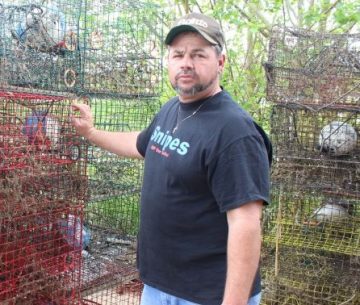 With a fast flick of his hand, Whitney Curole sent a large blue crab sailing into a white plastic basket as he sorted the last of the prized crustaceans at his Des Allemands dock operation. The crab flipped itself upright and extended its open claws in attack mode for a fight it obviously didn’t win. But Curole said he opposes the politics that he maintained are hurting his business as a commercial fisherman. Curole continued sorting the catch just in from a Houma crabber, delivered shortly before the Louisiana Wildlife and Fisheries Commission (LWFC) closed the season on Monday (Feb. 20) for 30 days. The move also came with a year round ban on harvesting immature female crabs for commercial sale. Curole and LWFC agree crab numbers are down, but they disagree on why. Reaching into a box full of crabs, he withdrew several crabs with numerous missing legs. “These legs were eaten by fish,” Curole said displaying a crab with all its legs gone. “You leave them overnight in the traps and it will be full of them.” Read the article here 09:50
With a fast flick of his hand, Whitney Curole sent a large blue crab sailing into a white plastic basket as he sorted the last of the prized crustaceans at his Des Allemands dock operation. The crab flipped itself upright and extended its open claws in attack mode for a fight it obviously didn’t win. But Curole said he opposes the politics that he maintained are hurting his business as a commercial fisherman. Curole continued sorting the catch just in from a Houma crabber, delivered shortly before the Louisiana Wildlife and Fisheries Commission (LWFC) closed the season on Monday (Feb. 20) for 30 days. The move also came with a year round ban on harvesting immature female crabs for commercial sale. Curole and LWFC agree crab numbers are down, but they disagree on why. Reaching into a box full of crabs, he withdrew several crabs with numerous missing legs. “These legs were eaten by fish,” Curole said displaying a crab with all its legs gone. “You leave them overnight in the traps and it will be full of them.” Read the article here 09:50
In Chesapeake Bay’s changing ecosystem, blue crab is king (and moving north)
 In the face of an evolving ecosystem, experts agree many of the differences in Chesapeake Bay marine life can – at least in part – be attributed to a worldwide warming trend. Over the last three decades, water temperatures in the Chesapeake Bay have increased about 1.5 degrees Celsius, or about 2.7 degrees Fahrenheit, said Rom Lipcius, professor of marine science at the Virginia Institute of Marine Science. The change means populations of many native sea creatures in the Chesapeake have moved or expanded north in search of cooler water temperatures, and other non-native creatures have moved in. As the warming trend continues, experts say some marine species will thrive as others struggle to survive in the face of temperature, environment and predator and prey changes. “It’s not all bad news, and it’s not all good news,” said Jon Hare, science and research director for the National Oceanic and Atmospheric Administration’s Northeast Fisheries Science Center. “There are both winners and losers in this situation.” There have been a number of species, including blue crab, scup and black sea bass, that have shifted or extended northward along the Atlantic coast, said Hare. Read the story here 08:35
In the face of an evolving ecosystem, experts agree many of the differences in Chesapeake Bay marine life can – at least in part – be attributed to a worldwide warming trend. Over the last three decades, water temperatures in the Chesapeake Bay have increased about 1.5 degrees Celsius, or about 2.7 degrees Fahrenheit, said Rom Lipcius, professor of marine science at the Virginia Institute of Marine Science. The change means populations of many native sea creatures in the Chesapeake have moved or expanded north in search of cooler water temperatures, and other non-native creatures have moved in. As the warming trend continues, experts say some marine species will thrive as others struggle to survive in the face of temperature, environment and predator and prey changes. “It’s not all bad news, and it’s not all good news,” said Jon Hare, science and research director for the National Oceanic and Atmospheric Administration’s Northeast Fisheries Science Center. “There are both winners and losers in this situation.” There have been a number of species, including blue crab, scup and black sea bass, that have shifted or extended northward along the Atlantic coast, said Hare. Read the story here 08:35
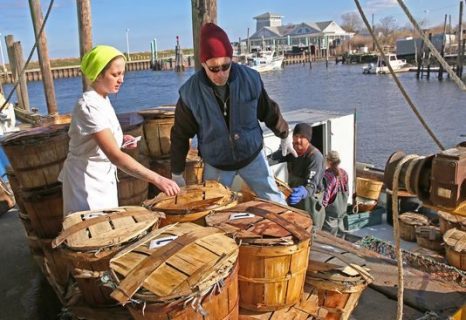
Winter Blue Crab season starts
Fresh blue claw crab is available for retail purchase at the Belford Seafood Cooperative in Middletown. The commercial dredge season for blue claw crab started Thursday and the first harvests have been reaped from crab grounds in Sandy Hook Bay and elsewhere. The Dutch Girl returned about noon to the co-op dock with its haul of about a couple dozen bushels of crab — a mix of females, small and large males. About eight co-op boats in total crabbed on opening day. While a portion of the crab harvest loaded at the co-op will be trucked out to other markets and restaurants, plenty will be kept for retail sale at the Belford seafood market counter. The crab dredge season goes from Dec. 1 through March 31, (except in Delaware Bay where the season is Nov. 15 through April 15). Short video, Read the story here 19:48
A Good News Report: Blue crab numbers rebounding
 Blue crab population numbers have grown for the second straight year, especially for female crabs, but their numbers are still below target levels, a Chesapeake Bay Program report released Thursday said. The report also found that crabs were not being overfished, with about 50 million pounds taken last year over 2014’s 35.2 million pounds — the lowest harvest in 25 years. It urged regulators to stay the course and maintain crab management regulations in order to maintain the progress. Female crabs rebounded from a depleted 68 million in 2014 to 194 million at the beginning of the 2016 crabbing season, and juvenile crabs, those that will grow to harvestable size by the fall and grow into large crabs by next season, were also holding steady. Read the rest here 07:59
Blue crab population numbers have grown for the second straight year, especially for female crabs, but their numbers are still below target levels, a Chesapeake Bay Program report released Thursday said. The report also found that crabs were not being overfished, with about 50 million pounds taken last year over 2014’s 35.2 million pounds — the lowest harvest in 25 years. It urged regulators to stay the course and maintain crab management regulations in order to maintain the progress. Female crabs rebounded from a depleted 68 million in 2014 to 194 million at the beginning of the 2016 crabbing season, and juvenile crabs, those that will grow to harvestable size by the fall and grow into large crabs by next season, were also holding steady. Read the rest here 07:59
Will a great year for Chesapeake Bay crabs mean a great year for Watermen?
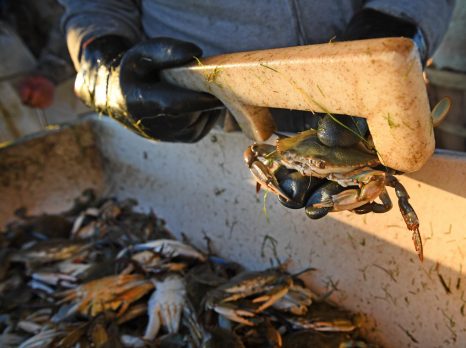 At 4:41 a.m., Bubby Powley looked at his watch, looked at the thin, pink glow to the east, and looked at the dark water sliding past his boat. According to Maryland state law, he was allowed to start catching crabs exactly one hour before sunrise, and that was right . . . about . . . “Now. Dontcha think, Monroe?” Powley said, hitting a lever on a boom that lifted his first batch of the day from the Chesapeake Bay. The sprightly 66-year-old swung the basket inboard, where his culler of 42 years, Monroe Dorsey, 68, a slim cigar clenched under his white mustache, dumped a few dozen wriggling crustaceans into a fiberglass basin. It was a pretty good haul in what so far has been a very good crab harvest. Dorsey measured male after male with a plastic caliper and tossed those of five inches or more into one of the six and a half bushels Powley would sell later that day to a wholesaler. The summer is getting off to a promising start along America’s biggest estuary,,, Read the rest here 15:31
At 4:41 a.m., Bubby Powley looked at his watch, looked at the thin, pink glow to the east, and looked at the dark water sliding past his boat. According to Maryland state law, he was allowed to start catching crabs exactly one hour before sunrise, and that was right . . . about . . . “Now. Dontcha think, Monroe?” Powley said, hitting a lever on a boom that lifted his first batch of the day from the Chesapeake Bay. The sprightly 66-year-old swung the basket inboard, where his culler of 42 years, Monroe Dorsey, 68, a slim cigar clenched under his white mustache, dumped a few dozen wriggling crustaceans into a fiberglass basin. It was a pretty good haul in what so far has been a very good crab harvest. Dorsey measured male after male with a plastic caliper and tossed those of five inches or more into one of the six and a half bushels Powley would sell later that day to a wholesaler. The summer is getting off to a promising start along America’s biggest estuary,,, Read the rest here 15:31
Overharvest means changes coming to Louisiana blue-crab fishery
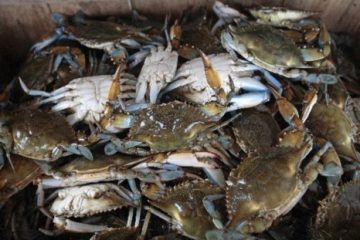 Most bays and tidal lakes in Louisiana these days look like obstacle courses, where the first boater to make it across without wrapping a crab-trap line in his prop wins. Hard to believe that less than half a century ago, the crab trap hadn’t yet been invented. Now, they’re more prevalent in state marshes than mosquitoes. All those wire cages mean it’s getting harder for female crabs to run the gauntlet and make it to the salty waters of the coast to lay their eggs. As a result, Louisiana has seen a concerning decline in its blue-crab population, according to Jeff Marx, a crustacean biologist with the Louisiana Department of Wildlife and Fisheries. Marx has spent two of the last 10 days explaining to two different boards the challenges currently facing Louisiana’s crab population. The first presentation was to the Louisiana Wildlife and Fisheries Commission, the regulatory board that ultimately will make decisions on how to attack the problem. The second was to the state’s blue-crab task force, which serves as a policy liaison between the department and crabbers in the field. Read the rest here 15:11
Most bays and tidal lakes in Louisiana these days look like obstacle courses, where the first boater to make it across without wrapping a crab-trap line in his prop wins. Hard to believe that less than half a century ago, the crab trap hadn’t yet been invented. Now, they’re more prevalent in state marshes than mosquitoes. All those wire cages mean it’s getting harder for female crabs to run the gauntlet and make it to the salty waters of the coast to lay their eggs. As a result, Louisiana has seen a concerning decline in its blue-crab population, according to Jeff Marx, a crustacean biologist with the Louisiana Department of Wildlife and Fisheries. Marx has spent two of the last 10 days explaining to two different boards the challenges currently facing Louisiana’s crab population. The first presentation was to the Louisiana Wildlife and Fisheries Commission, the regulatory board that ultimately will make decisions on how to attack the problem. The second was to the state’s blue-crab task force, which serves as a policy liaison between the department and crabbers in the field. Read the rest here 15:11
Female blue crabs getting tagged in Gulf migration study
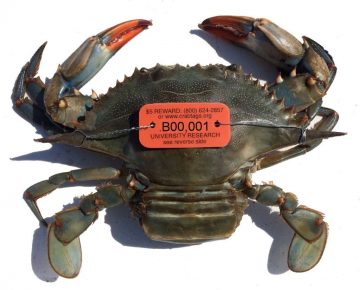 Their scientific name – Callinectes sapidus – means “beautiful swimmer.” But just where, when and how far do blue crabs – specifically, the Gulf of Mexico’s adult female blue crabs – beautifully swim? A just-started, Gulf Coast-wide research project involving affixing tags on as many as 30,000 adult female blue crabs aims to try answering those questions. Insights garnered through reporting of the recovery of those marked crustaceans should help fisheries scientists better understand the population dynamics of this key coastal marine species and translate that knowledge into sound, science-based management decisions. Those management decisions will be crucial to maintaining a healthy population of blue crabs, the Gulf Coast’s most abundant large crab – a vital prey/predator component of the marine ecosystem and an economically and socially important piece of the recreational and commercial fishery. There is a lot to learn about blue crabs. Read the rest here 22:45
Their scientific name – Callinectes sapidus – means “beautiful swimmer.” But just where, when and how far do blue crabs – specifically, the Gulf of Mexico’s adult female blue crabs – beautifully swim? A just-started, Gulf Coast-wide research project involving affixing tags on as many as 30,000 adult female blue crabs aims to try answering those questions. Insights garnered through reporting of the recovery of those marked crustaceans should help fisheries scientists better understand the population dynamics of this key coastal marine species and translate that knowledge into sound, science-based management decisions. Those management decisions will be crucial to maintaining a healthy population of blue crabs, the Gulf Coast’s most abundant large crab – a vital prey/predator component of the marine ecosystem and an economically and socially important piece of the recreational and commercial fishery. There is a lot to learn about blue crabs. Read the rest here 22:45
Smithsonian expert urges caution, patience on blue crab recovery
 The results are in, 2016 is going to be a good year for blue crabs in the Chesapeake Bay. An iconic figure embedded in the culture and cuisine of the Chesapeake Bay area, the blue crab (Callinectes sapidus) sustains the most profitable fishery in Maryland and supports thousands of fishermen and seafood businesses in Maryland and Virginia. Based on the annual winter survey conducted by the Maryland Department of Natural Resources and the Virginia Institute of Marine Science, there are nearly 35 percent more blue crabs in the Chesapeake Bay this season than there were in 2015. That’s good news, especially on the heels of a 38 percent increase the previous year. But scientists say there is a cautionary tale in this rapid rise. (but, of course!) Read the rest here 16:29
The results are in, 2016 is going to be a good year for blue crabs in the Chesapeake Bay. An iconic figure embedded in the culture and cuisine of the Chesapeake Bay area, the blue crab (Callinectes sapidus) sustains the most profitable fishery in Maryland and supports thousands of fishermen and seafood businesses in Maryland and Virginia. Based on the annual winter survey conducted by the Maryland Department of Natural Resources and the Virginia Institute of Marine Science, there are nearly 35 percent more blue crabs in the Chesapeake Bay this season than there were in 2015. That’s good news, especially on the heels of a 38 percent increase the previous year. But scientists say there is a cautionary tale in this rapid rise. (but, of course!) Read the rest here 16:29
Blue crabs poised to make comeback in Delaware – Oysters problematic
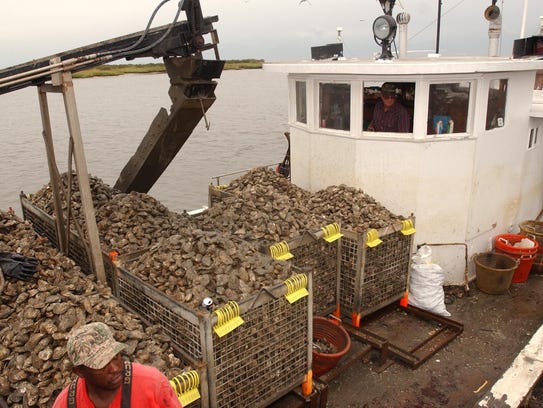 Last spring and summer, crabs were in short supply, and combined with other factors, prices for them peaked at more than $300 a bushel. Crabs are a summer delicacy in Delaware, but last year’s prices meant many restaurants and consumers had to cut back – and in some cases do without. But there is good news growing in the sands of the Delaware and other nearby waterways: The crabs are coming back. Delaware’s projected forecast for the 2016 blue crab harvest is just over 4 million pounds, up 1 million pounds from last year’s projection. That should be good news both for the state’s commercial fishers and for consumers. Read the article here 12:42
Last spring and summer, crabs were in short supply, and combined with other factors, prices for them peaked at more than $300 a bushel. Crabs are a summer delicacy in Delaware, but last year’s prices meant many restaurants and consumers had to cut back – and in some cases do without. But there is good news growing in the sands of the Delaware and other nearby waterways: The crabs are coming back. Delaware’s projected forecast for the 2016 blue crab harvest is just over 4 million pounds, up 1 million pounds from last year’s projection. That should be good news both for the state’s commercial fishers and for consumers. Read the article here 12:42
Rare blue crab found in Mississippi River at Cape Girardeau
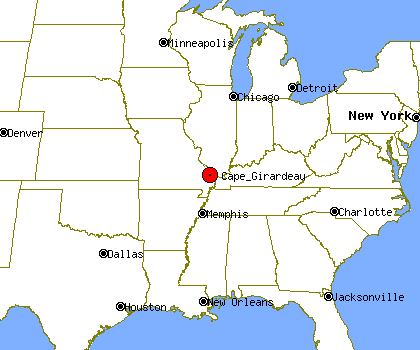 Missouri Department of Conservation resource scientists found an unexpected guest recently when they pulled a net during fish sampling in the Mississippi River. Southeast Missouri State University graduate student Nick Kramer, working with colleagues Wes Sleeper and Mark Hempel, pulled the net containing a male blue crab, according to a news release from the Missouri Department of Conservation.,, Read the article here 09:36
Missouri Department of Conservation resource scientists found an unexpected guest recently when they pulled a net during fish sampling in the Mississippi River. Southeast Missouri State University graduate student Nick Kramer, working with colleagues Wes Sleeper and Mark Hempel, pulled the net containing a male blue crab, according to a news release from the Missouri Department of Conservation.,, Read the article here 09:36
South Carolina: Crabs, other fish showing impact of flood
 The onslaught of big crabs into the creeks feeding in the Charleston estuary is among the first indications biologists are getting of the effects of October’s historic flooding on marine life — a wash of water so large that the creeks only now are starting to fall to levels anywhere near what observers would call ebb tides and the offshore remains less salty than usual. Among other shellfish, oyster beds are again off-limits partly because of the flood, while the shrimp catch — so far — doesn’t seem to have been helped or hurt. Read the rest here 08:52
The onslaught of big crabs into the creeks feeding in the Charleston estuary is among the first indications biologists are getting of the effects of October’s historic flooding on marine life — a wash of water so large that the creeks only now are starting to fall to levels anywhere near what observers would call ebb tides and the offshore remains less salty than usual. Among other shellfish, oyster beds are again off-limits partly because of the flood, while the shrimp catch — so far — doesn’t seem to have been helped or hurt. Read the rest here 08:52
Virginia considers opening blue crab winter dredge fishery, would mean reducing daily bushel limits of hard pot crabbers
 After closing the winter dredge fishery for Chesapeake blue crab for seven years straight to help the struggling stock rebuild, the state is inching closer toward reopening it this winter. The Crab Management Advisory Committee of the Virginia Marine Resources Commission (VMRC) voted overwhelmingly last week to recommend ending the closure — a move that actually puts the committee at odds with VMRC staff and its commissioner, who recommend keeping the ban in place. Read the rest here 07:23
After closing the winter dredge fishery for Chesapeake blue crab for seven years straight to help the struggling stock rebuild, the state is inching closer toward reopening it this winter. The Crab Management Advisory Committee of the Virginia Marine Resources Commission (VMRC) voted overwhelmingly last week to recommend ending the closure — a move that actually puts the committee at odds with VMRC staff and its commissioner, who recommend keeping the ban in place. Read the rest here 07:23
With Maryland crabs scarcer than usual, prices from Louisiana and Carolina rise
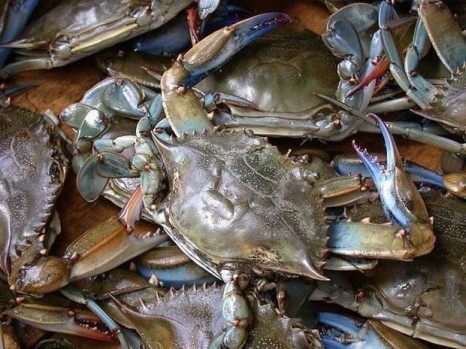 Though locally caught crabs are rarely plentiful this time of year, a scarcity of mature Maryland crabs has been driving up prices for all sources of crabs for Maryland restaurants, say many in the industry.”We’ve got a really slow start in Maryland,” said Davis. There were fewer crabs to harvest at the start of the season in April, she said, because last winter’s bitter cold killed a lot of the adult crustaceans that slumbered on the bottom in Maryland waters. The annual winter survey of the crab population found,,, Video, Read the rest here 11:58
Though locally caught crabs are rarely plentiful this time of year, a scarcity of mature Maryland crabs has been driving up prices for all sources of crabs for Maryland restaurants, say many in the industry.”We’ve got a really slow start in Maryland,” said Davis. There were fewer crabs to harvest at the start of the season in April, she said, because last winter’s bitter cold killed a lot of the adult crustaceans that slumbered on the bottom in Maryland waters. The annual winter survey of the crab population found,,, Video, Read the rest here 11:58

Louisiana crab catch rose in 2014, preliminary state numbers show
Louisiana blue crab landings and price rose in 2014 compared to the 2013 catch, according to preliminary state numbers., according to preliminary state numbers. Catch rose about 8 percent and fishers garnered about 20 percent more money for that catch. Fishers in the state caught nearly 42 million pounds of crab in 2014 and brought in a new state record high $62 million for that catch, according to those preliminary number, released this month in the Lagniappe newsletter, a joint publication of Louisiana Sea Grant and LSU AgCenter. Read the rest here 19:41
Blue crabs lead banner North Carolina fish catch
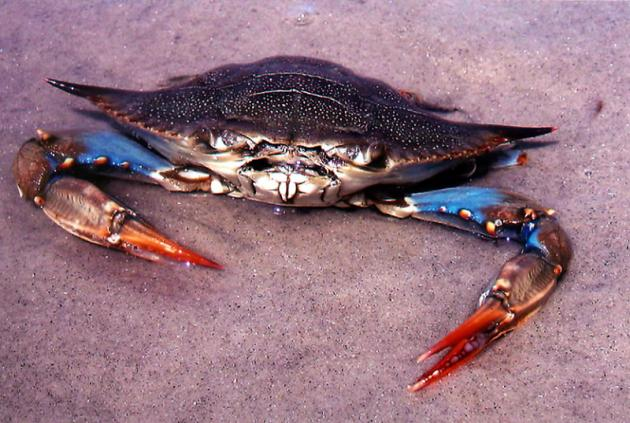 Blue crabs were the stars in a banner year for North Carolina commercial fishing. Fishermen sold 61.7 million pounds of finfish and shellfish in 2014, a 23 percent increase over the previous year, according to a news release from the state’s Division of Marine Fisheries. It was the first year landings had increased since 2010. The dockside value was $93.8 million, the most since 2002. “It’s certainly good news, and good news is needed,” said Jerry Schill, president of the North Carolina Fisheries Association. Read the rest here 22:36
Blue crabs were the stars in a banner year for North Carolina commercial fishing. Fishermen sold 61.7 million pounds of finfish and shellfish in 2014, a 23 percent increase over the previous year, according to a news release from the state’s Division of Marine Fisheries. It was the first year landings had increased since 2010. The dockside value was $93.8 million, the most since 2002. “It’s certainly good news, and good news is needed,” said Jerry Schill, president of the North Carolina Fisheries Association. Read the rest here 22:36
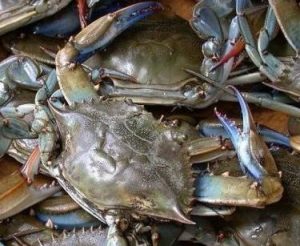
Chesapeake Bay’s blue crab population rebounding
Last year was a dismal episode for Chesapeake Bay blue crabs and the watermen who harvest them. It’s not that crabs were being overfished. Instead, experts suspect a combination of environmental factors. The good news now is that preliminary evidence from the annual blue crab winter dredge survey shows the numbers are climbing again. Read the rest here 08:26
To save their depleted species, female blue crabs go the extra mile to spawn in the bay
 Deep under the cold, dark waters of the Chesapeake Bay, the answer to whether the decimated blue crab population can survive lies buried in mud. Tens of millions of female crabs are scattered across the floor of the lower bay in southern Virginia, where the estuary pours into the Atlantic Ocean, waiting out winter for one of the most important events in their short lives. When spring comes, they will inch closer to the ocean with billions of eggs. Read the rest here 11:21
Deep under the cold, dark waters of the Chesapeake Bay, the answer to whether the decimated blue crab population can survive lies buried in mud. Tens of millions of female crabs are scattered across the floor of the lower bay in southern Virginia, where the estuary pours into the Atlantic Ocean, waiting out winter for one of the most important events in their short lives. When spring comes, they will inch closer to the ocean with billions of eggs. Read the rest here 11:21
Blue crab helping fight invasive green crab in Atlantic
 Invasive green crab in Atlantic Canada may have met their match in a naturally occurring blue crab that is increasing in waters off Nova Scotia. Naturally occurring? ( I dunno about this one.) Read the rest here 00:30
Invasive green crab in Atlantic Canada may have met their match in a naturally occurring blue crab that is increasing in waters off Nova Scotia. Naturally occurring? ( I dunno about this one.) Read the rest here 00:30
Important facts about the blue crab (Callinectes sapidus) savory, beautiful swimmer
 Of all the edible crabs, the blue crab is the most abundant and popular. Many Americans prefer crab meat to any other kind of seafood, and yet, these leggy crustaceans were once believed to be poisonous. Crab fishing is one of the largest shell fish operations in the U.S., employing thousands of fishermen and processors. According to the latest figures,, Read more here 16:09
Of all the edible crabs, the blue crab is the most abundant and popular. Many Americans prefer crab meat to any other kind of seafood, and yet, these leggy crustaceans were once believed to be poisonous. Crab fishing is one of the largest shell fish operations in the U.S., employing thousands of fishermen and processors. According to the latest figures,, Read more here 16:09
Crabbing off to slow start, Beaufort County commercial fishermen say
“The Great Heat.” Could Global Warming Turn The Sound Into Blue Crab Heaven?
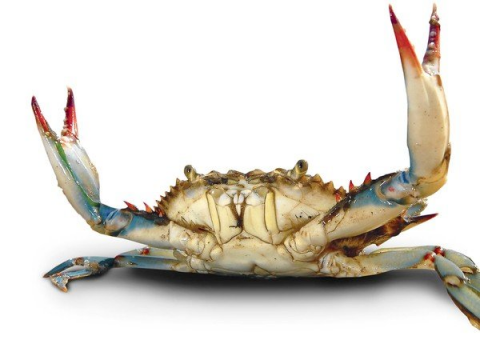 NEW HAVEN — — Global warming already has begun to transform Long Island Sound, according to many marine scientists, creating climate-change winners, like blue crabs, and losers, like lobsters. historical fishing and climate records According to those records, beginning in the late 1880s, southern New England experienced several decades of extraordinarily warm weather. Lobster populations plummeted (just as they did a century later). Blue crabs began to multiply, as did a number of other species better suited to warmer waters. “The Great Heat.” Read more here 07:48
NEW HAVEN — — Global warming already has begun to transform Long Island Sound, according to many marine scientists, creating climate-change winners, like blue crabs, and losers, like lobsters. historical fishing and climate records According to those records, beginning in the late 1880s, southern New England experienced several decades of extraordinarily warm weather. Lobster populations plummeted (just as they did a century later). Blue crabs began to multiply, as did a number of other species better suited to warmer waters. “The Great Heat.” Read more here 07:48
Blue crab threatened by high-dollar harvest?
 The crabs used to be caught commercially a dozen or more per trap. Now crabbers are lucky to pull up three or four at a time. Yet there are more crabbers and crab traps out there than long-timers have seen before, they say. The reason is simple: $100 per bushel. That’s the price for the best of the crabs because the fishery is declining all along the East Coast – partly from overfishing. Read more here 14:24
The crabs used to be caught commercially a dozen or more per trap. Now crabbers are lucky to pull up three or four at a time. Yet there are more crabbers and crab traps out there than long-timers have seen before, they say. The reason is simple: $100 per bushel. That’s the price for the best of the crabs because the fishery is declining all along the East Coast – partly from overfishing. Read more here 14:24
VIMS professor links sea star die-off to blue crab, lobster diseases – Rising sea temperature, contaminants to blame
As dramatic videos of the West Coast sea star die-off make the rounds on social media, a Virginia Institute of Marine Science professor has been quietly studying similar catastrophes closer to home. (Jeffrey) Shields sees parallels between the “Sea Star Wasting Syndrome,” as the mysterious attack has come to be known, and his own research into similar infections in crabs and lobsters. Read more here virginiagazette 16:21
Blue crab, Shrimp shortage, Limited Oyster supply send Seafood prices soaring in South Mississippi
 Forget ham and turkey. For Coastians, seafood is the highlight of a holiday table. Oyster dressing, marinated crab claws, boiled shrimp, crab cakes, oysters on the half shell, stuffed shrimp, fried everything. “The Christmas season is the busiest time of the year because everyone likes to make their own special seafood gumbo and their momma’s favorite oyster dressing,” said Andrew Gunkel, general manager of Quality Poultry and Seafood in Biloxi. This year, though, prices may be at an all-time high for local bounty. more@sunherald 08:08
Forget ham and turkey. For Coastians, seafood is the highlight of a holiday table. Oyster dressing, marinated crab claws, boiled shrimp, crab cakes, oysters on the half shell, stuffed shrimp, fried everything. “The Christmas season is the busiest time of the year because everyone likes to make their own special seafood gumbo and their momma’s favorite oyster dressing,” said Andrew Gunkel, general manager of Quality Poultry and Seafood in Biloxi. This year, though, prices may be at an all-time high for local bounty. more@sunherald 08:08

































